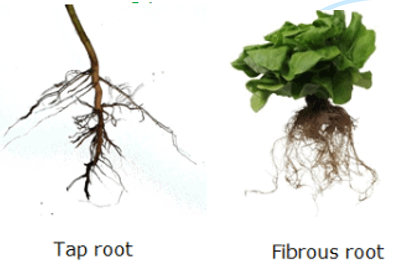Class 6 Science Chapter 7 Getting to Know Plants Worksheet
CBSE Class 6 Science Chapter 7 Getting to Know Plants Worksheet with Answers is available here. Free PDF download for this worksheet is available on our official mobile app. You can practice this worksheet for better grade and testing the concept you have learned. The worksheet test paper for 6 Science Getting to Know Plants is very helpful for students who wish to get good marks in exams. We have also provided answers to the worksheet questions in this article.
Class 6 Science Getting to Know Plants Worksheets with Answers Chapter 7 – PDF
1. True/false:
a. All plants are of same size.
Answer: False
b. Photosynthesis takes place in the absence of light.
Answer: False
c. Transpiration and Photosynthesis are the main function of leaf.
Answer: True
d. Roots hold the plant above the soil.
Answer: False
e. Pistil is the female part of the flower.
Answer: True
2. Fill in the blanks:
a. Major parts of plants are the _______, _______, ________, and _______.
Answer: stem, branches, roots, leaves, flowers
b. Plants can be classified into three categories: _______, ______ and ______.
Answer: herbs, shrubs, trees
c. ______ is the process by which leaves prepare food for the plant.
Answer: Photosynthesis
d. Two types of roots are _______ and ________.
Answer: tap root, fibrous root
e. _________ is the male part of the flower.
Answer: Stamen
3. What are ovules?
Answer: Small bead like structures inside the ovary are called ovules.
4. Name two flowers with joined petals.
Answer: Datura and Bell shaped flower
5. Name two flowers with joined sepals.
Answer: China rose and Cotton
6. Name two flowers with separated sepals.
Answer: Rose and Jasmine
7. From where do potatoes get the starch?
Answer: Potatoes get the starch from other parts of the plant and store it.
8. How are leaves attached to the stem?
Answer: The leaves are attached to the stem by petiole.
9. Write 5 examples of edible roots.
Answer: carrot, radish, sweet potato, turnip and tapioca
10. The following picture shows two types of root. Write the type of roots for the following figures.
Answer:

11. How do plants exchange gases with the environment?
Answer: Exchange of gases takes place in the plants mainly through the tiny pores on the surface of their leaves called stomata.
12. Do the flowers with joined sepals have petals that are separate or are they joined together?
Answer: If the sepals of flowers are joined together, then its petals may or may not be joined together.
13. Do the flowers with joined petals have stamen joined to the petal?
Answer: If the petals of flowers are joined together, then its stamen may or may not be joined to the petal.
14. What type of roots the plants with parallel venation in the leaves likely to have?
Answer: Plants with parallel venation in the leaves likely to have fibrous roots.
For example: grass, wheat, maize, etc. have fibrous roots with parallel venation.
15. How stem is like a two way street?
Answer: Stem is like a two way street as it conducts water and minerals from the roots to the leaves and transport food prepared by the leaves to the other part of the plant.
16. Do all the leaves have petioles?
Answer: No, all the leaves do not have petioles. Some leaves have a petiole, which attaches the leaf to the stem and some leaves that do not have petioles are directly attached to the plant stem.
17. What are the functions of the petals and sepals in flowers?
Answer: Function of Petals – Bright color of petals helps in pollination by attracting insects such as butterflies and bees to the flower.
Function of Sepals – It protects the developing flower from any harm.
18. Why are leaves of few plants modified into tendrils? Give examples.
Answer: In weak, stemmed plants, leaf or a part of leaf gets modified into green threadlike structures called tendrils which help in climbing around the support. Example: pea plant
19. Why is it difficult to separate the sprouted young plants from the cotton wool?
Answer: Roots fix the plant firmly in the soil. In case of sprouted young plants, the roots grown fix the seeds in cotton wool and thus make it difficult to separate these from cotton wool.
20. What are trees? Give two examples of trees.
Answer: Some plants are very tall and have hard and thick brown stem. The stems have branches in the upper part, much above the ground. Such plants are called trees.
Examples – Mango tree, Neem tree, Peepal tree etc.